
New Plymouth: The Gem of New Zealand's West Coast
Discover New Plymouth: A scenic coastal city in New Zealand blending vibrant arts, rich history, and outdoor adventures, all set against the backdrop of Mount Taranaki.
New Plymouth, located on the west coast of New Zealand's North Island, is a charming city known for its stunning natural beauty, vibrant arts scene, and rich history. Nestled between the Tasman Sea and the majestic Mount Taranaki, this city offers a perfect blend of outdoor adventures and cultural experiences. A visit to New Plymouth is incomplete without exploring the iconic Coastal Walkway, a 13-kilometer path that offers breathtaking views of the ocean and the city. Along the walkway, you'll find the famous Wind Wand, a kinetic sculpture by Len Lye, which has become a symbol of the city. For art enthusiasts, the Govett-Brewster Art Gallery and Len Lye Centre are must-visit attractions, showcasing contemporary art and the works of renowned artist Len Lye. Nature lovers will be enchanted by the lush Pukekura Park, a sprawling garden in the heart of the city that features lakes, walking trails, and seasonal festivals. Adventure seekers will find plenty to do, from hiking up Mount Taranaki for panoramic views to surfing at some of the best spots along the coast. The city's rich Maori culture can be experienced at Puke Ariki, a combined museum and library that tells the story of the Taranaki region. New Plymouth's culinary scene is another highlight, with a variety of cafes, restaurants, and farmers' markets offering fresh, local produce and delicious cuisine. Whether you're looking for fine dining or casual eats, you'll find something to suit your taste buds. With its friendly locals, stunning landscapes, and diverse attractions, New Plymouth is a destination that promises unforgettable memories.
Local tips in New Plymouth
- Visit the Coastal Walkway in the early morning or late afternoon for the best light and fewer crowds.
- Check the weather forecast before planning a hike up Mount Taranaki; conditions can change rapidly.
- Spend an evening at the Festival of Lights in Pukekura Park if visiting during the summer months.
- Sample local produce at the New Plymouth Farmers' Market, held every Sunday morning.
- Rent a bike to explore the city and its scenic trails more efficiently.
New Plymouth: The Gem of New Zealand's West Coast
New Plymouth, located on the west coast of New Zealand's North Island, is a charming city known for its stunning natural beauty, vibrant arts scene, and rich history. Nestled between the Tasman Sea and the majestic Mount Taranaki, this city offers a perfect blend of outdoor adventures and cultural experiences. A visit to New Plymouth is incomplete without exploring the iconic Coastal Walkway, a 13-kilometer path that offers breathtaking views of the ocean and the city. Along the walkway, you'll find the famous Wind Wand, a kinetic sculpture by Len Lye, which has become a symbol of the city. For art enthusiasts, the Govett-Brewster Art Gallery and Len Lye Centre are must-visit attractions, showcasing contemporary art and the works of renowned artist Len Lye. Nature lovers will be enchanted by the lush Pukekura Park, a sprawling garden in the heart of the city that features lakes, walking trails, and seasonal festivals. Adventure seekers will find plenty to do, from hiking up Mount Taranaki for panoramic views to surfing at some of the best spots along the coast. The city's rich Maori culture can be experienced at Puke Ariki, a combined museum and library that tells the story of the Taranaki region. New Plymouth's culinary scene is another highlight, with a variety of cafes, restaurants, and farmers' markets offering fresh, local produce and delicious cuisine. Whether you're looking for fine dining or casual eats, you'll find something to suit your taste buds. With its friendly locals, stunning landscapes, and diverse attractions, New Plymouth is a destination that promises unforgettable memories.
When is the best time to go to New Plymouth?
Iconic landmarks you can’t miss
Pukekura Park
Explore the natural beauty and tranquility of Pukekura Park, a lush oasis in New Plymouth, perfect for families and nature lovers alike.

Te Rewa Rewa Bridge
Discover the breathtaking Te Rewa Rewa Bridge in New Plymouth, New Zealand—an architectural gem offering stunning views of nature and rich cultural heritage.

Govett-Brewster Art Gallery/Len Lye Centre
Discover contemporary masterpieces at the Govett-Brewster Art Gallery and Len Lye Centre, a must-visit destination for art enthusiasts in New Plymouth.

Brooklands Zoo
Discover the wonders of wildlife at Brooklands Zoo, a family-friendly haven in New Plymouth with diverse animal exhibits and beautiful gardens.

Recreation Reserve
Experience the tranquility and natural beauty of Recreation Reserve, a must-visit park in New Plymouth ideal for relaxation and outdoor fun.

Paritutu Rock
Experience the breathtaking views and adventurous hiking at Paritutu Rock, New Plymouth's iconic natural landmark and a must-see for every traveler.

Puke Ariki
Explore the fascinating history and culture of New Plymouth at Puke Ariki, a must-visit museum for all tourists in New Zealand.

Tūpare
Discover Tūpare, a breathtaking garden in New Plymouth, offering serenity, stunning landscapes, and a rich horticultural heritage for every nature lover.

Bell Block Beach
Experience the tranquility of Bell Block Beach, a stunning seaside escape in New Plymouth, New Zealand, perfect for relaxation and water activities.

TSB Stadium
Experience the excitement of live sports and concerts at TSB Stadium in New Plymouth, a premier venue for entertainment and community events.

The Wind Wand
Discover the Wind Wand in New Plymouth, a stunning kinetic sculpture that beautifully merges art with nature, captivating visitors with its elegance and charm.

Pukekura Park Fernery and Display Houses
Explore the enchanting Pukekura Park Fernery and Display Houses, a lush paradise filled with stunning plants and tranquil landscapes in New Plymouth, NZ.

New Plymouth isite Visitor Information Centre
Discover New Plymouth's treasures at the Isite Visitor Information Centre, your ultimate resource for exploring this stunning coastal city.

New Plymouth Coastal Walkway
Explore the beautiful New Plymouth Coastal Walkway, a 13-kilometer scenic path that offers breathtaking views, art installations, and local culture.

Bowl of Brooklands
Discover the Bowl of Brooklands, a stunning outdoor event venue in New Plymouth surrounded by lush gardens and hosting vibrant live performances.

Unmissable attractions to see
Pukekura Park
Discover the breathtaking beauty of Pukekura Park, a lush oasis in New Plymouth, perfect for relaxation, recreation, and stunning natural scenery.

Te Rewa Rewa Bridge
Discover the beauty of Te Rewa Rewa Bridge, an architectural marvel offering stunning views of Mount Taranaki and embracing the spirit of New Zealand's landscapes.

Brooklands Park
Experience the tranquil beauty of Brooklands Park, a lush oasis in New Plymouth perfect for relaxation, family fun, and nature exploration.

Govett-Brewster Art Gallery/Len Lye Centre
Explore contemporary masterpieces at the Govett-Brewster Art Gallery and Len Lye Centre, a stunning fusion of art and architecture in New Plymouth.

Brooklands Zoo
Explore Brooklands Zoo in New Plymouth, where native and exotic animals come to life in a beautiful park setting, perfect for family fun and wildlife education.

Recreation Reserve
Explore the breathtaking beauty of Recreation Reserve, a perfect blend of nature and recreation in New Plymouth, New Zealand.
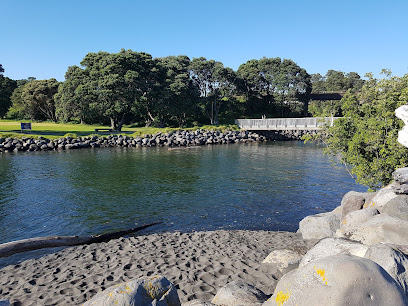
Paritutu Rock
Experience the breathtaking views and adventurous hiking trails at Paritutu Rock, a must-visit natural attraction in New Plymouth, New Zealand.

Puke Ariki
Explore New Plymouth's Puke Ariki: A cultural gem featuring engaging exhibits on history, archaeology, and wildlife for all ages.

Ngamotu Beach
Experience the serene beauty of Ngamotu Beach, a perfect blend of relaxation and adventure in New Plymouth, New Zealand.

Tūpare
Discover Tūpare, New Plymouth's exquisite garden showcasing stunning flora, serene landscapes, and rich history in a tranquil setting.

Fitzroy Park
Experience the serene beauty of Fitzroy Park, a coastal retreat in New Plymouth, perfect for relaxation and outdoor adventures amidst nature's charm.

Bell Block Beach
Experience the tranquility and beauty of Bell Block Beach in New Plymouth, a perfect coastal retreat for relaxation and adventure in New Zealand.

The Wind Wand
Experience the captivating Wind Wand in New Plymouth, a stunning kinetic sculpture that embodies the essence of New Zealand's natural beauty and artistic heritage.

Pukekura Park Fernery and Display Houses
Explore the captivating beauty of Pukekura Park's Fernery and Display Houses, a must-see destination for nature lovers in New Plymouth, New Zealand.

Chaddy's Charters
Experience the beauty of Port Taranaki with Chaddy's Charters, offering unforgettable boat tours, canoeing, and bicycle rentals in stunning coastal scenery.

Essential places to dine
Deluxe Diner
Experience the heart of American cuisine at Deluxe Diner in New Plymouth – perfect for families seeking delicious comfort food.

Crowded House Bar & Eatery
Experience local flavors and vibrant atmosphere at Crowded House Bar & Eatery in New Plymouth – your go-to spot for food and fun.

The Good Home
Discover The Good Home: A must-visit restaurant and bar in New Plymouth offering delicious local cuisine in a welcoming atmosphere.

Joe's Garage New Plymouth
Discover Joe's Garage in New Plymouth: A beloved restaurant-café offering delicious local flavors in a warm and inviting atmosphere.

Monica's Eatery
Discover the flavors of New Plymouth at Monica's Eatery—your go-to spot for delicious breakfasts and artisanal coffee.

Cobb & Co. New Plymouth
Experience delectable cuisine at Cobb & Co. New Plymouth—where local flavors meet exceptional dining in a welcoming atmosphere.
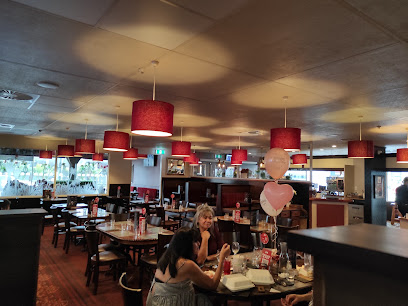
Area 41 Restaurant New Plymouth
Discover exquisite Italian cuisine at Area 41 Restaurant in New Plymouth - where heritage meets modern culinary artistry.

Gusto Restaurant, Cafe & Bar
Discover Gusto Restaurant, Cafe & Bar: A culinary haven in Port Taranaki offering stunning ocean views and delicious local cuisine.

Social Kitchen
Discover the flavors of New Zealand at Social Kitchen in New Plymouth - where local ingredients meet innovative cuisine.

Arranged Marriage Restaurant
Discover authentic Indian cuisine in New Plymouth at Arranged Marriage Restaurant – where every meal tells a story.

Stumble Inn and Cafe
Experience the best of local cuisine at Stumble Inn and Cafe - where comfort meets flavor in New Plymouth.

Arborio Restaurant, Cafe & Terrace Bar
Discover culinary excellence at Arborio Restaurant, Cafe & Terrace Bar in New Plymouth - where taste meets breathtaking views.

Thai Chef's Restaurant New Plymouth
Savor authentic Thai cuisine in New Plymouth at Thai Chef's Restaurant - where tradition meets modern Asian fusion.

Laughing Buddha
Discover the rich flavors of authentic Chinese cuisine at Laughing Buddha in New Plymouth, where every meal is a delightful experience.

Treehouse Bar & Bistro
Discover the enchanting Treehouse Bar & Bistro in Lynmouth, New Plymouth - where exquisite cuisine meets breathtaking views in a cozy atmosphere.

Markets, malls and hidden boutiques
Centre City Shopping Centre
Discover the heart of New Plymouth at Centre City Shopping Centre, your ultimate shopping and dining destination for an unforgettable experience.

The Valley Mega Centre
Experience the vibrant shopping landscape at The Valley Mega Centre in New Plymouth, where shopping, dining, and entertainment come together.

Farmers New Plymouth
Discover a world of shopping at Farmers New Plymouth, your one-stop destination for fashion, beauty, and home essentials in New Zealand.

Spotlight New Plymouth
Explore your creativity at Spotlight New Plymouth, your go-to destination for crafts, fabrics, and home essentials in Taranaki.

The Warehouse New Plymouth
Shop the best of New Zealand at The Warehouse New Plymouth, where variety meets value in a vibrant shopping environment.

Postie New Plymouth
Explore Postie New Plymouth for stylish, affordable clothing for the entire family, with options for everyone from babies to adults.

Brutalitees
Explore Brutalitees in New Plymouth for unique T-shirts and exceptional tattoo experiences, embodying the spirit of New Zealand's fashion and art.
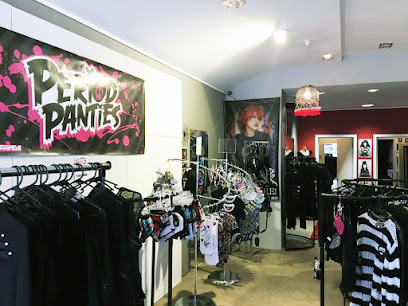
Tiger Town Treasure Trove
Explore the charm of Tiger Town Treasure Trove, a consignment shop in Lynmouth, offering vintage finds and unique treasures for every collector.

North Beach New Plymouth
Discover North Beach in New Plymouth for the latest in surf and skate fashion, gear, and a vibrant coastal lifestyle.

Best 4 Less
Explore Best 4 Less in New Plymouth for unique finds and local treasures that capture the spirit of New Zealand.
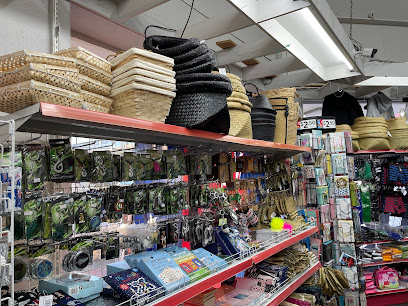
Trick Or Treat Gifts
Discover a treasure trove of unique gifts and local souvenirs at Trick Or Treat Gifts in New Plymouth, where every find tells a story.

Whitcoulls New Plymouth
Discover a delightful selection of books, stationery, and toys at Whitcoulls New Plymouth, your go-to gift shop in the heart of the city.
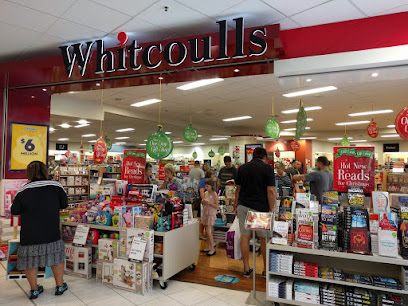
Willo Ltd
Explore Willo Ltd in New Plymouth for unique gifts and stylish women's clothing that capture the spirit of New Zealand.

Acquisitions - New Plymouth
Discover unique souvenirs and local crafts at Acquisitions, the premier gift shop in New Plymouth, New Zealand.

Bookstop Gallery
Explore Bookstop Gallery in New Plymouth – a treasure trove of books and local souvenirs awaits every visitor.

Essential bars & hidden hideouts
Shining Peak Brewing
Discover a unique blend of craft beers and delicious cuisine at Shining Peak Brewing in New Plymouth, an unmissable brewpub experience.

Crowded House Bar & Eatery
Discover the vibrant atmosphere and delicious cuisine at Crowded House Bar & Eatery, the heart of New Plymouth's social scene.

The Good Home
Discover New Plymouth's vibrant dining experience at The Good Home, where local flavors meet a lively atmosphere.

Stumble Inn and Cafe
Experience the flavors of New Plymouth at Stumble Inn and Café, a charming spot for delicious meals and handcrafted beverages in a cozy atmosphere.
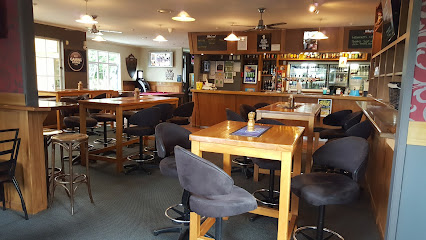
Arborio Restaurant, Cafe & Terrace Bar
Discover the vibrant flavors and stunning views at Arborio Restaurant, Cafe & Terrace Bar in New Plymouth, a favorite dining spot for tourists and locals alike.
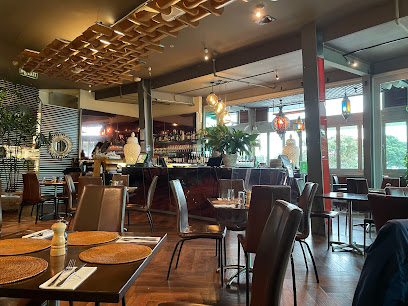
Peggy Gordon's Celtic Bar
Discover the lively spirit of New Plymouth at Peggy Gordon's Celtic Bar, where authentic Irish culture meets unforgettable live music and delicious cuisine.

Frederics Restaurant and Bar
Savor the flavors of New Plymouth at Frederics Restaurant and Bar, where grilled perfection meets a fine selection of local beers.
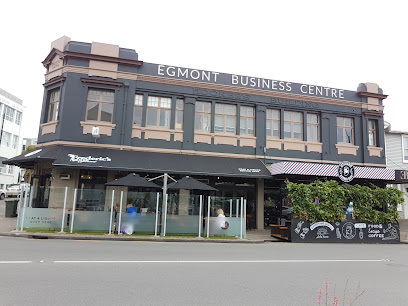
Snug Lounge
Indulge in exquisite Japanese cuisine and vibrant cocktails at Snug Lounge, the heart of New Plymouth's dining scene.

Ms White
Experience the best of New Plymouth's pizza scene at Ms White, where quality ingredients and a vibrant atmosphere come together.

Ate Fortyone
Experience the vibrant culinary scene at Ate Fortyone in New Plymouth, where delicious food and a lively atmosphere await every visitor.

The Hour Glass
Discover the vibrant dining scene at The Hour Glass in New Plymouth, where tapas, cocktails, and a lively atmosphere await you.
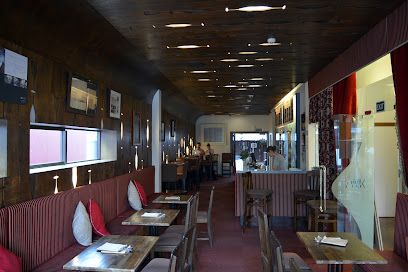
Koi Lounge bar
Discover the vibrant fusion of Indian cuisine and cocktail culture at Koi Lounge Bar in New Plymouth, where every bite and sip tells a story.

The Rooftop Bar & Eatery
Discover exquisite flavors and stunning views at The Rooftop Bar & Eatery in New Plymouth, a perfect blend of relaxation and culinary excellence.

Salty Dog Cafe & Bar
Experience the lively atmosphere and delicious offerings of Salty Dog Cafe & Bar in New Plymouth, a perfect stop for food and fun.

Shifty's Sports Bar & TAB
Discover the perfect blend of sports, food, and fun at Shifty's Sports Bar & TAB in New Plymouth.

Local Phrases
-
- HelloKia ora
[kee-ah or-ah] - GoodbyeHaere rā
[high-ree rah] - YesĀe
[eye] - NoKāo
[kah-oh] - Please/You're welcomeWhakawhetai
[fah-kah-fay-tie] - Thank youKia ora
[kee-ah or-ah] - Excuse me/SorryAroha mai
[ah-raw-hah my] - How are you?Kei te pēhea koe?
[key teh pay-hair koh-eh] - Fine. And you?Pai. Ā, koe?
[pie. eye, koh-eh] - Do you speak English?Kōrero koe i te reo Pākehā?
[core-air-oh koh-eh ee teh reh-oh par-keh-hah] - I don't understandKāore au e mōhio
[kah-oh-reh oh eh maw-hee-oh]
- HelloKia ora
-
- I'd like to see the menu, pleaseMe āwhina ki te titiro i te mena, tēnā
[meh eye-fee-nah kee teh tee-tee-roh ee teh meh-nah, tay-nah] - I don't eat meatKāore au e kai kau
[kah-oh-reh oh eh kai kow] - Cheers!Nau mai!
[now my] - I would like to pay, pleaseKa hiahia au ki te utu, tēnā
[kah hee-ah-hee-ah oh kee teh oo-too, tay-nah]
- I'd like to see the menu, pleaseMe āwhina ki te titiro i te mena, tēnā
-
- Help!Āwhina!
[eye-fee-nah] - Go away!Haere atu!
[high-ree ah-too] - Call the Police!Karanga ki te Pirihimana!
[kah-rung-ah kee teh pee-ree-hee-mah-nah] - Call a doctor!Karanga ki te Rata!
[kah-rung-ah kee teh rah-tah] - I'm lostI wareware ahau
[ee wah-reh-wah-reh ah-how] - I'm illHe mate ahau
[hey mah-teh ah-how]
- Help!Āwhina!
-
- I'd like to buy...Ka hiahia au ki te hoko...
[kah hee-ah-hee-ah oh kee teh haw-kaw] - I'm just lookingKei te titiro ahau
[key teh tee-tee-roh ah-how] - How much is it?He aha te utu?
[hey ah-hah teh oo-too] - That's too expensiveHe nui rawa te utu
[hey new-ee rah-wah teh oo-too] - Can you lower the price?Ka taea e koe te whakaiti i te utu?
[kah tie-ah eh koh-eh teh fah-kai-tee ee teh oo-too]
- I'd like to buy...Ka hiahia au ki te hoko...
-
- What time is it?He aha te wa?
[hey ah-hah teh wah] - It's one o'clockKotahi te hāora
[kaw-tah-hee teh high-oh-rah] - Half past (10)Tekau me ngahuru
[teh-cow meh nah-gah-hoo-roo] - MorningRātā
[rah-tah] - AfternoonAhiahi
[ah-hee-ah-hee] - EveningPō
[paw] - YesterdayInānei
[ee-nah-nay] - TodayTēnei rā
[tay-nay rah] - TomorrowĀpōpō
[ah-paw-paw] - 1Tahi
[tah-hee] - 2Rua
[roo-ah] - 3Toru
[toh-roo] - 4Whā
[fah] - 5Rima
[ree-mah] - 6Ono
[aw-no] - 7Whitu
[fee-too] - 8Waru
[wah-roo] - 9Iwa
[ee-wah] - 10Tekau
[teh-cow]
- What time is it?He aha te wa?
-
- Where's a/the...?Kei hea te...?
[key hay-ah teh] - What's the address?He aha te wāhitau?
[hey ah-hah teh wah-hee-tow] - Can you show me (on the map)?Ka taea e koe te whakaatu i ahau (i te mahere)?
[kah tie-ah eh koh-eh teh fah-kah-ah-too ee ah-how (ee teh mah-hair-eh)] - When's the next (bus)?Āhea te taha o muri?
[eye-he-ah teh tah-hah oh moo-ree] - A ticket (to ....)He tiki (ki ....)
[hey tee-kee (kee)]
- Where's a/the...?Kei hea te...?
History of New Plymouth
-
New Plymouth, known as Ngāmotu to the local Māori, has a rich history of early settlement by the indigenous Māori people of the Taranaki iwi. The fertile volcanic soil and abundant resources made it an ideal location for thriving communities. Traditional pā (fortified villages) were established on the coastal terraces and hills, and the area became a significant cultural and strategic site long before European arrival.
-
European settlement in New Plymouth began in the early 1840s when the New Zealand Company established the town. The first settlers, predominantly from England, arrived aboard the William Bryan in 1841. These pioneers faced numerous challenges, including conflicts with local Māori over land ownership and adapting to New Zealand’s unique environment.
-
The Taranaki Wars were a series of conflicts between the Māori inhabitants and European settlers, primarily over land disputes. The First Taranaki War broke out in 1860 and lasted until 1861. A decade later, the Second Taranaki War erupted, lasting from 1863 to 1866. These wars were part of the larger New Zealand Wars and had lasting impacts on the region’s demographics and land ownership.
-
In the early 20th century, the discovery of oil and gas reserves in the Taranaki Basin brought significant economic changes to New Plymouth. The first successful oil well, the Moturoa Oil Well, was drilled in 1866, but it wasn’t until the mid-20th century that the industry truly boomed. Today, New Plymouth is known as the energy capital of New Zealand, with a thriving oil and gas sector contributing to its economy.
-
Paritutu Rock and the Sugar Loaf Islands are iconic geological features in New Plymouth. Paritutu Rock, a remnant of an ancient volcanic crater, offers stunning views of the city and coastline. The Sugar Loaf Islands, a group of seven islands, are remnants of an eroded volcanic cone and are now part of a marine reserve. These natural landmarks are significant both for their geological history and their cultural importance to the Māori.
-
Puke Ariki, meaning 'Hill of Chiefs' in Māori, is a cultural and heritage center in New Plymouth that encompasses a library, museum, and visitor information center. Opened in 2003, it serves as a hub for learning about the region’s history, from its geological origins to its Māori heritage and European settlement. The center is a testament to the community’s dedication to preserving and celebrating its rich history.
-
The Len Lye Centre, part of the Govett-Brewster Art Gallery, is a contemporary art museum dedicated to the works of New Zealand-born artist Len Lye. Opened in 2015, the center showcases Lye’s innovative kinetic sculptures and films. The building itself is an architectural marvel, with its stainless steel façade reflecting the dynamic spirit of Lye’s work. It has become a cultural landmark in New Plymouth, attracting art enthusiasts from around the world.
New Plymouth Essentials
-
New Plymouth is located on the west coast of New Zealand's North Island. The nearest international airport is Auckland Airport (AKL), approximately 360 kilometers away. From Auckland, you can take a domestic flight to New Plymouth Airport (NPL), which takes about an hour. Alternatively, you can drive from Auckland to New Plymouth, a journey that typically takes around 4.5 hours by car. Intercity buses also operate routes to New Plymouth from various cities in New Zealand, providing a scenic and comfortable travel option.
-
New Plymouth offers a range of transportation options. The city's public bus service, operated by Tranzit, provides convenient routes throughout the area. Taxis and rideshare services like Uber are also readily available. For those who prefer to drive, car rental services are available at New Plymouth Airport and within the city. Cycling is a popular mode of transport, particularly along the Coastal Walkway, which offers stunning views of the Tasman Sea.
-
The official currency in New Zealand is the New Zealand Dollar (NZD). Credit and debit cards are widely accepted in most establishments, including restaurants, hotels, and shops. ATMs are plentiful in New Plymouth, and it is advisable to carry some cash for small purchases or in case you visit more rural areas. Contactless payment methods, such as PayWave, are also commonly used.
-
New Plymouth is generally a safe destination for tourists. However, it is always wise to take standard precautions. Avoid walking alone at night in unfamiliar areas and be mindful of your belongings in crowded places. While the city does not have specific high-crime areas targeting tourists, staying vigilant and aware of your surroundings is advisable. The Central Business District and the Coastal Walkway are safe and popular areas, but it's always best to stay cautious.
-
In case of emergency, dial 111 for police, fire, or medical assistance. New Plymouth has a well-equipped hospital, Taranaki Base Hospital, providing emergency services. Pharmacies are available throughout the city for minor health issues and over-the-counter medications. It is recommended to have travel insurance that covers medical emergencies. For non-urgent health advice, you can call Healthline at 0800 611 116.
-
Fashion: Do dress in layers, as the weather can be unpredictable. Casual wear is generally acceptable, but bring a rain jacket. Religion: Do respect local customs, but New Plymouth is generally secular. Public Transport: Do have exact change or a transport card for buses. Don't play loud music or eat on public transport. Greetings: Do greet people with a friendly 'hello' or 'kia ora' (a Māori greeting). Eating & Drinking: Do try local delicacies and seafood. Don't tip, as it is not customary in New Zealand.
-
To experience New Plymouth like a local, visit the Farmers Market on weekends for fresh produce and artisanal goods. Take a stroll along the Coastal Walkway, especially around sunset for beautiful views. Engage with locals at Pukekura Park, a popular spot for picnics and walks. Don’t miss the Govett-Brewster Art Gallery/Len Lye Centre for contemporary art. For a unique experience, hike up Paritutu Rock for panoramic views of the city and coastline.
Trending Landmark in New Plymouth
-
Pukekura Park
-
Te Rewa Rewa Bridge
-
Govett-Brewster Art Gallery/Len Lye Centre
-
Brooklands Zoo
-
Recreation Reserve
-
Paritutu Rock
-
Puke Ariki
-
Tūpare
-
Bell Block Beach
-
TSB Stadium
-
The Wind Wand
-
Pukekura Park Fernery and Display Houses
-
New Plymouth isite Visitor Information Centre
-
New Plymouth Coastal Walkway
-
Bowl of Brooklands
Nearby Cities to New Plymouth
-
Things To Do in Whanganui
-
Things To Do in Hamilton
-
Things To Do in Taupo
-
Things To Do in Palmerston North
-
Things To Do in Rotorua
-
Things To Do in Tauranga
-
Things To Do in Napier
-
Things To Do in Masterton
-
Things To Do in Auckland
-
Things To Do in Wellington
-
Things To Do in Nelson
-
Things To Do in Blenheim
-
Things To Do in Gisborne
-
Things To Do in Whangarei
-
Things To Do in Kaikoura











